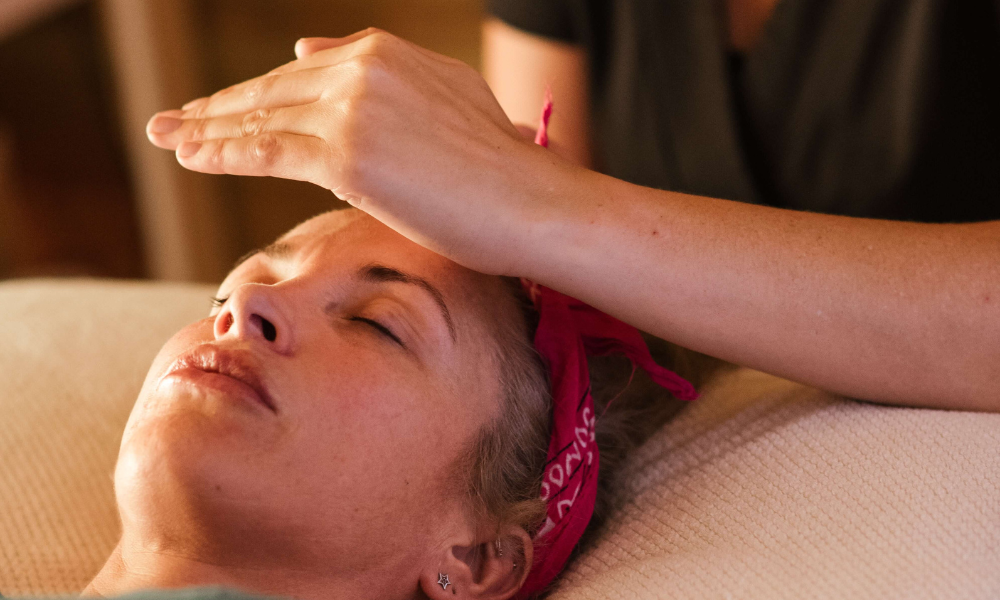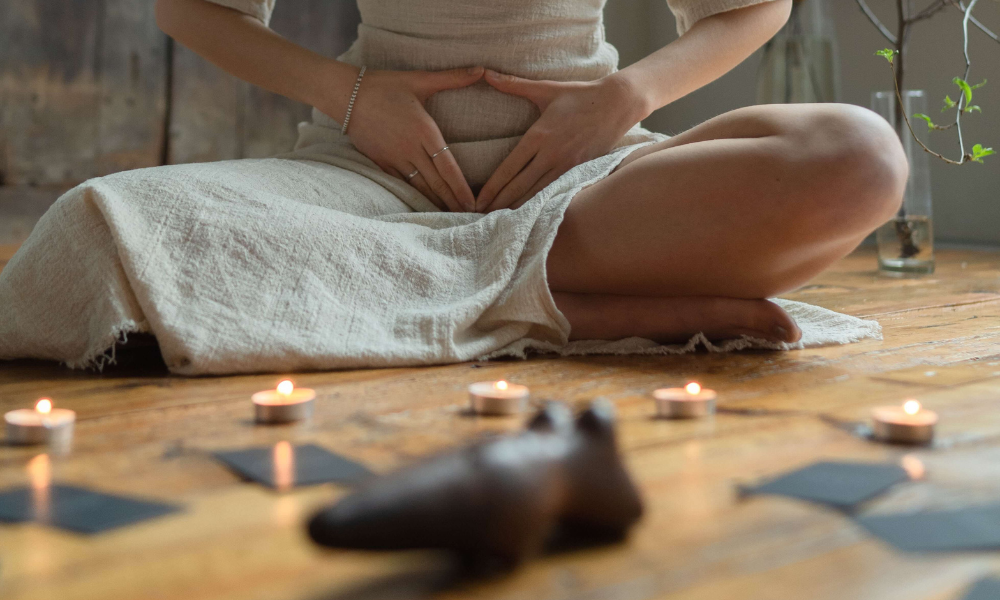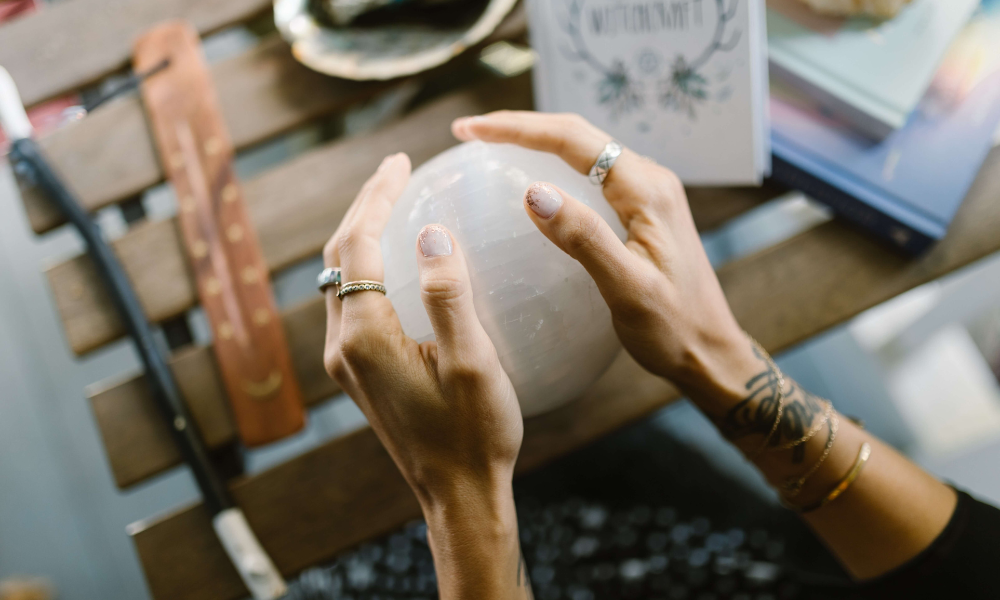heart chakra: how do I balance chakras in the body?

The heart chakra is at the center of the Chakra System. It provides a holistic framework for healing the mind, body, and spirit by offering a path to nuanced spiritual growth.
The Heart Chakra governs our relationships with others and our ability to connect with ourselves and the world around us. When the Heart Chakra is balanced and open, we experience a deep love and connection with ourselves and others.
Key Takeaways
- The chakras are a vital energy system in the body that is responsible for our physical, emotional, and spiritual well-being.
- Seven main chakras are located along the spine, each associated with different colors, sounds, and aspects of our lives.
- The Heart Chakra is a vital center of energy in our body. It is responsible for our ability to give and receive love, empathy, and compassion.
- When our chakras are balanced and open, we experience optimal health, emotional balance, and spiritual growth.
- When our chakras are blocked or imbalanced, experiences are physical, emotional, and spiritual, negatively impacting our well-being.
- There are different techniques to balance your chakras. Common practices are meditation, yoga, and energy healing.
What are Chakras?
According to Eastern spiritual traditions such as Hinduism, Buddhism, and Yoga, Chakras are the key energy centers in the body.
There are seven main chakras from the base of the spine to the top of the head. Each energy center is associated with a specific sound, color, and aspect of our physical, emotional, mental, and spiritual beings.
The word “chakra” comes from Sanskrit and means “wheel” or “disk.” It reflects the circular and spinning nature of these energy centers.
Balancing and opening the chakras is believed to promote physical, emotional, mental, and spiritual well-being. Various practices such as meditation, yoga, and energy healing can help balance the chakras.

How do the Chakras work?
Each chakra is associated with a specific area of the human body and with certain spiritual aspects of our being. They spin and vibrate at different frequencies, each frequency corresponding to another aspect of our physical, emotional, and spiritual health.
They act as channels for prana (life force energy) which is responsible for our vitality, health, and well-being. When balanced, prana can flow freely through the body, promoting an abundance of health, stability, clarity, and spiritual growth.
Why is the Heart Chakra important?
The Heart Chakra is our vital energy center, contributing to giving and receiving love, empathy, and compassion. It is associated with the color green and is in the center of the chest.
The Heart Chakra is important because it governs our relationships with others.
When the Heart Chakra is open and balanced, we experience love, joy, and happiness. We can connect with others on a more profound level and experience a greater sense of empathy and compassion. This helps us form more substantial and meaningful relationships, leading to greater happiness and fulfillment.
However, when the Heart Chakra is blocked or imbalanced, we may feel lonely or isolated. We may also experience physical symptoms such as poor circulation, respiratory issues, or heart problems.
We may feel a lack of direction and disconnect from those around us and the external world.
Where does the Chakra system come from?
The chakra system originated in ancient India, where it was described in the Vedas (the earliest Hindu scriptures). The concept of chakras was later elaborated in the Upanishads, philosophical and spiritual texts dating back to about 800 BCE.
The chakra system was also embraced by Buddhism, which originated in India around the same time. The Tibetan Buddhist tradition, in particular, has a rich chakra system called the “wheels of life.”
What does it mean when a chakra is blocked?
Imbalanced chakras mean that the flow of prana can become restricted or distorted, resulting in physical, emotional, and spiritual problems.
A blocked heart chakra may overlap with physical problems in the chest and feelings of loneliness, insecurity, or lack of love.
How can I unblock my heart chakra?
You can use many methods to unblock your heart chakra and welcome deeper connections into your life. These techniques can be used to help open all of the other chakras in the system, too.
Meditation to balance the heart chakra

One of the most effective ways to balance your chakras is through meditation. For example, guided meditations designed to balance the heart chakra or sitting quietly and focusing on it.
Yoga for the heart chakra

Practicing yoga can also help with balancing. Each yoga pose activates and counteracts specific chakras in the body. You can find specific yoga sequences for chakra balancing online.
Heart chakra healing crystals

Crystals and gemstones are believed to have specific vibrational frequencies that can help balance the chakras. Each chakra is associated with a specific crystal or gemstone. Rose Quartz is best known for its connection with the heart chakra.
You can place the crystal on the corresponding chakra during meditation or wear it as jewelry to keep the energy flowing.
Aromatherapy to open the heart chakra

Certain essential oils are believed to have properties that help balance the chakras. You can use essential oils in many ways, including in a diffuser, adding them to a bath, or using them in massage. Jasmine, rose, and lavender are known for their healing properties that help balance the heart chakra.
Affirmations to balance the heart chakra
Affirmations are positive statements used to focus your mind and shift your energy. You can use affirmations specific to each chakra to help balance and unblock it. For example, for the heart chakra, you could say, “I am loved, and I am loving.”
Energy healing to open the heart chakra

You can also call for the help of an energy healer, such as a Reiki practitioner, who can help balance your chakras using hands-on or distance healing techniques.
Remember that it’s important to approach chakra healing with an open mind and a willingness to explore your inner world. With time and practice, you can develop a deeper understanding of your chakras and learn various techniques to keep them balanced and flowing.
What are the seven chakras?
- Root Chakra
- Sacral Chakra
- Solar Plexus Chakra
- Heart Chakra
- Throat Chakra
- Third-Eye Chakra
- Crown Chakra

Root Chakra (Muladhara)
The root chakra, also known as the Muladhara Chakra, is located at the base of your spine, near the perineum, and is associated with red. It is the first chakra in the system and is considered the foundation of the entire chakra system.
The root chakra is associated with the earth element and is connected to our sense of safety, security, and survival. It governs our connection to our physical body, the basic needs such as shelter, food, and safety, and our connection to our family, community, and the earth.
Open root chakra
We feel grounded, safe, and secure when the root chakra is balanced and open, gaining a strong connection to our physical body and spiritual energy center. This sacred balance serves our yearning to belong and connect to our family, community, and earth.
Closed root chakra
When the root chakra is blocked or imbalanced, we may experience physical, emotional, and spiritual symptoms. Physical symptoms may include lower back pain, constipation, and leg and foot issues.
Emotional symptoms may include feelings of fear, anxiety, and insecurity. We may feel disconnected from our physical body and have difficulty feeling grounded and present in the moment.
How to balance the root chakra
You can use techniques such as grounding exercises, physical activity, spending time in nature, and working with the color red to balance and heal the root chakra.
Yoga poses such as Child’s Pose, Mountain Pose, and Warrior Pose can also help balance the root chakra.
With time and practice, you can develop a stronger connection to your physical body and a deeper sense of safety, security, and groundedness.
Sacral Chakra (Swadhisthana)

The sacral chakra, also known as the Swadhisthana Chakra, is the second chakra in the system, located in the lower abdomen, about two inches below the navel.
It is associated with orange and relates to our sense of creativity, pleasure, and emotional balance.
The sacral chakra is associated with the water element, which is fluid and adaptable. It is connected to our emotional body, creative energy, and the ability to feel pleasure, joy, and passion. It governs our sexuality, creativity, and the ability to form and maintain intimate relationships.
Open sacral chakra
When the sacral chakra is open and balanced, we feel emotionally balanced and have a healthy sense of pleasure and creativity. We can connect with our emotional bodies and express ourselves in healthy ways. We also have a healthy relationship with our sexuality and can experience pleasure and intimacy in a healthy and balanced way.
Closed sacral chakra
When the sacral chakra is blocked or imbalanced, we may experience reproductive and urinary problems, lower back pain, and issues with the hips and pelvis.
Emotional symptoms may include a lack of creativity, low libido, and difficulty expressing emotions. We may also have a hard time forming and maintaining intimate relationships.
How to balance the sacral chakra
To balance and heal the sacral chakra, you can use techniques such as creative expression, practicing mindfulness, spending time in nature near water, and working with the color orange.

Yoga poses such as Pigeon Pose, Bound Angle Pose, and Cobra Pose can also help balance the sacral chakra.
With time and practice, you can cultivate a healthy relationship with your emotions, sexuality, and creativity and experience greater joy, pleasure, and emotional balance in your life.
Solar Plexus Chakra (Manipura)
The solar plexus chakra, also known as Manipura Chakra, is the third chakra in the system, located in the upper abdomen, just above the navel.
Associated with the color yellow, it is related to our sense of personal power, self-worth, and self-confidence.
This chakra is associated with the fire element, which is transformative and powerful. It is connected to our sense of self and our ego and governs our ability to make decisions, take action, and set boundaries.
Open solar plexus chakra
When the solar plexus chakra is balanced and open, we feel a sense of personal power and self-confidence.
We can make decisions with ease and take action toward our goals. We also have a healthy sense of self-worth and can set boundaries with others in a healthy and balanced way.
Closed solar plexus chakra
When the solar plexus chakra is blocked, physical symptoms may occur, including digestive problems, stomach ulcers, and issues with the pancreas and liver.
Emotional symptoms may include low self-esteem, a lack of confidence, and a feeling of powerlessness. We may also have difficulty making decisions and taking action toward our goals.
How to balance the solar plexus chakra
To balance and heal the solar plexus chakra, you can use techniques such as self-care, setting healthy boundaries, practicing self-affirmations, and working with the color yellow.
Yoga poses such as Boat Pose, Warrior III, and Half Camel Pose can also help balance the solar plexus chakra.
With time and practice, you can build habits to cultivate a healthy sense of personal power and self-confidence and experience greater success and fulfillment.
Heart Chakra (Anahata)

The heart chakra, also known as Anahata Chakra, is the fourth chakra in the chakra system, located in the center of the chest. Associated with the color green, it is related to our sense of love, compassion, and connection with others.
The heart chakra is associated with the air element, which is expansive and light. It is connected to our emotional body and the ability to feel love, empathy, and kindness.
It governs our ability to give and receive love and form healthy relationships.
Open heart chakra
When the heart chakra is balanced and open, we feel a sense of love, compassion, and connection with ourselves and others. We can give and receive love freely and have healthy relationships with those around us.
We also have a deep sense of empathy and compassion for others and can connect with them more deeply.
Closed heart chakra
When the heart chakra is blocked or imbalanced, we may feel a lack of empathy, have difficulty forming and maintaining relationships, and experience a feeling of loneliness or isolation.
Physical symptoms may include heart and lung problems, asthma, and high blood pressure.
How to balance the heart chakra

To balance and heal the heart chakra, you can use various techniques, such as practicing forgiveness, gratitude, and self-love, and try working with the color green.
Yoga poses such as Camel Pose, Fish Pose, and Cobra Pose can also help balance the heart chakra.
With time and practice, you can cultivate a healthy sense of love, compassion, and connection with yourself and others and experience greater fulfillment and joy in your life.
Throat Chakra (Vishuddha)
The fifth chakra in the system is the throat chakra, also known as Vishuddha Chakra. It is associated with blue and is related to our ability to communicate effectively and express our authentic selves.
The throat chakra is associated with the ether, or space, element. It is connected to our ability to communicate through speech, writing, and other forms of self-expression. It governs our ability to speak our truth, to listen actively to others, and to express our creativity.
Open throat chakra
When the throat chakra is open, we can communicate and express ourselves authentically. We can speak our truth confidently, listen actively to others, and express our creativity in diverse ways.
Closed throat chakra
When the throat chakra is blocked or imbalanced, we may experience physical symptoms such as sore throats, thyroid problems, and neck pain. Emotional symptoms may include difficulty expressing oneself, a fear of speaking up, and a lack of creativity.
How to balance the throat chakra
To balance and heal the throat chakra, you can practice active listening, singing or chanting, engaging in creative expression, and working with the color blue.
Yoga poses such as Plow Pose, Shoulder Stand, and Fish Pose can help balance the throat chakra. With time and practice, you can cultivate a healthy sense of self-expression and communication and experience greater authenticity and creativity.
The Third Eye Chakra
The third eye chakra, or the Ajna Chakra, is sixth in the chakra system, located in the center of the forehead between the eyebrows. Associated with the color indigo, it relates to our intuition, wisdom, and spiritual awareness.
Light is associated with the third eye chakra, which represents insight, pure consciousness, clarity, and higher consciousness. It governs our ability to see beyond the physical world and tap into our inner wisdom and intuition.
Open third-eye chakra
When the third eye chakra is open, we have a strong sense of intuition, meaning we can tap into our inner wisdom and spiritual awareness.
We have a robust understanding of ourselves and the world around us, allowing us to connect with our higher self and the divine.
Closed third-eye chakra
When the third eye chakra is blocked or imbalanced, we may experience physical symptoms such as headaches, vision problems, and insomnia.
Emotional symptoms could include a lack of clarity or direction, confusion, and feeling disconnected from one’s higher purpose.
How to balance the third eye chakra

To balance the third eye chakra, you can use various techniques such as meditation, visualization, and practicing mindfulness.
Yoga poses such as Child’s Pose, Downward Dog, and Headstand can also help balance the third eye chakra.
With time and practice, you can cultivate a more profound sense of intuition, wisdom, and spiritual awareness and experience greater clarity and purpose in your life.
Crown Chakra (Sahasrara)
The crown chakra, or Sahasrara Chakra, is the highest in the chakra system and is at the top of the head. It has a violet or white color. We connect with our divinity, enlightenment, and consciousness through this chakra.
The crown governs our ability to transcend the limitations of our physical body and connect with our higher self and the divine.
Open crown chakra
A deeper spiritual connection is embodied, and cosmic consciousness can come to light when the crown chakra is properly balanced.
We can tap into our highest potential and experience a profound sense of oneness with the universe.
Closed crown chakra
We may experience headaches, insomnia, and neurological disorders when the crown chakra is blocked or imbalanced.
Emotional symptoms may include a lack of purpose or direction, a feeling of disconnection from the divine, and a sense of spiritual emptiness.
How to balance the crown chakra

Meditation, prayer, and connecting with nature can balance this chakra.
Yoga poses such as Tree Pose, Lotus Pose, and Headstand can also help balance the crown chakra.
With time and practice, you can cultivate a deeper spiritual connection and awareness and experience greater peace, joy, and fulfillment.
Heart chakra conclusion
In conclusion, the chakra system provides a holistic framework for understanding and healing the mind, body, and spirit.
The Heart Chakra is important because it governs our relationships with others. We struggle to form meaningful connections when blocked. But, we can welcome new people and relationships into our lives when unrestricted.
The chakra system offers a path to personal development, self-awareness, and spiritual growth, leading to a more fulfilling and meaningful existence. By working with our chakras, we can tap into our true potential and live a life of purpose and joy.



